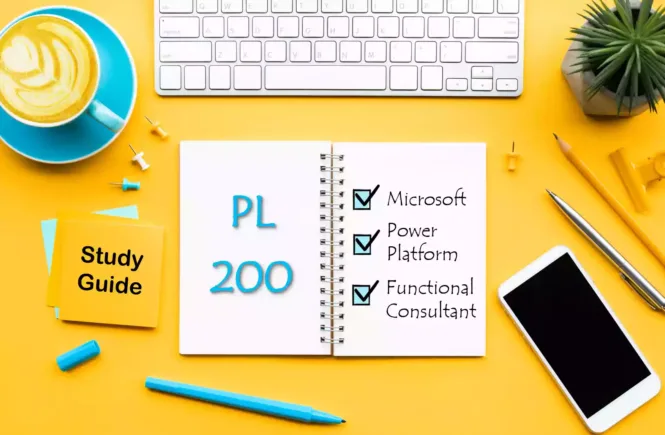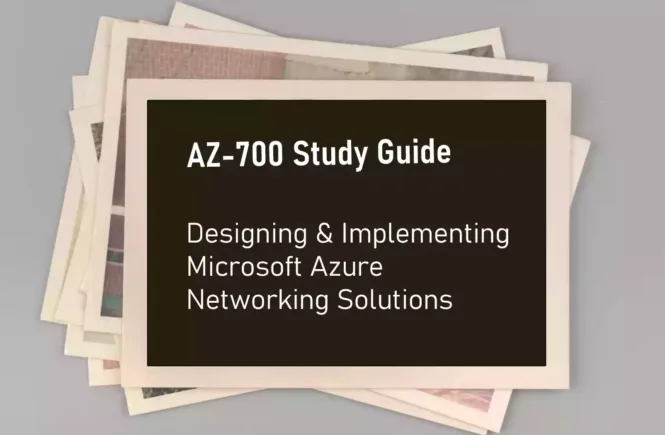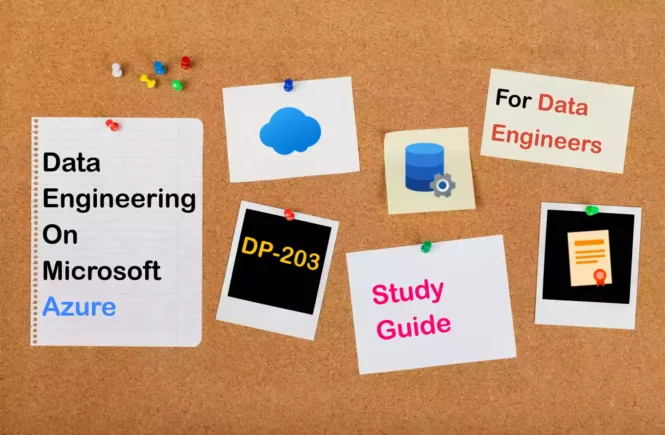How to Prepare for the PL-100 Exam?
Preparing for the PL-100 Microsoft Power Platform App Maker Certificate exam? Don’t know where to start? This post is the PL-100 Certificate Study Guide (with links to each exam objective).
I have curated a list of articles from Microsoft documentation for each objective of the PL-100 exam. I hope this article will help you to achieve the PL-100 Microsoft Power Platform App Maker Associate Certification. Also, please share the post within your circles so it helps them to prepare for the exam.
Exam Voucher for PL-100 with 1 Retake
Get 40% OFF with the combo
PL-100 MS Power Platform App Maker Course
| Pluralsight (Free trial) | Building and Administering Power Apps |
| LinkedIn Learning | Microsoft Power Platform Foundations |
PL-100 Power Platform App Maker Practice Test
| Whizlabs Exam Questions | Power Platform App Maker Test Questions |
| Udemy Practice Test | Microsoft Power Platform App Maker – 6 tests |
| Amazon e-book (PDF) | Power Platform App Maker 87 Prep Questions |
Looking for PL-100 Dumps? Read This!
Using PL-100 exam dumps can get you permanently banned from taking any future Microsoft certificate exam. However, I strongly suggest you validate your understanding with practice questions.
Check out all the other Power Platform certificate study guides
Full Disclosure: Some of the links in this post are affiliate links. I receive a commission when you purchase through them.
Design Solutions (10-15%)
Create a High-level Design
Collect business requirements
Brainstorm & gather your Power Apps business requirements
Gathering requirements for building a Power App
Identify data sources
Checking data sources for Power Apps
Power Apps multiple data sources
Describe real-world objects as entities
Create a custom table that has components in Power Apps
Describe the user experience
Enhanced user experience for apps
Building the UI in a canvas app
Create a high-level data model
Data modeling: Designing your data structure
Identify Required Power Platform Components
Determine required Power Apps
Identify existing resources and licenses
Licensing overview for Microsoft Power Platform
Understand Power Platform licensing
Identify gaps between existing functionality and requirements
Map problem domain to Power Platform tools
Microsoft Power Platform build tools
Identify required business processes
Evaluate accelerators, Microsoft apps and services, and third-party solutions
Overview of industry accelerators
What ‘Microsoft Apps and Services’ is?
Describe connectors including standard, premium, and custom connectors
Design Data Models
Determine required entities
Customer entities (account, contact, customer address)
Identify relationships
Identify fields and data types
Determine requirements for offline access
Implement offline capability in your app
Build offline apps with Power Apps capabilities
Design User Interface
Identify opportunities for component reuse
Share your reusable components
Apply user interface (UI) standards
Enhanced user experience with Unified Interface
Design for accessibility
Create accessible apps in Power Apps
Design for localization
Amazon link (affiliate)
Design Output
Define data output requirements
Define requirements for visualizations
Visualizations in Power BI reports
Identify repositories for analytical data
Design Security, Privacy, and Compliance
Identify data that must be protected or requires special handling
Identify tools that help ensure compliance with applicable government regulations
Implement GDPR in your Power Apps portals
Understand Power Platform Environments
Understand how to get started building apps
Get started building apps using the Power Platform
Describe the different types of environments
Describe Common Data Service solutions
Describe other environment creation options
Create and manage environments
Create Solutions (55-60%)
Manage Power Platform Development Environments
Create a solution
Add existing apps and flows to a solution
Link an existing canvas app to a solution
Add a Power Automate Flow into a solution
Add existing flows to Solutions
Run Solution Checker and interpret results
Use a solution checker to validate your apps
Make higher quality Apps with a Solution checker
Create Model-driven Apps
Create model-driven apps
Get started with model-driven apps in Power Apps
Build your first model-driven app from scratch
Create a site map
Create a site map using the site map designer
Create and configure Common Data Service entity forms
Create and configure Common Data Service entity views
Embed model-driven app records in Microsoft Teams channels
Embed a model-driven app as tab app in Teams
Create Canvas Apps
Create canvas apps within a solution
Create a canvas app from within a solution
Connect to data sources in canvas apps
Understand data sources for canvas apps
Add a data connection to a canvas app
Build canvas apps screens
Create responsive layouts in canvas apps
Configure apps for offline access
Develop offline-capable canvas apps
Implementing offline capability in your app
Use formulas
Get started with canvas-app formulas
Use basic formulas to make better canvas apps
Formula reference for Power Apps
Use collections and variables
Create and update a collection
Understand canvas-app variables
Describe the implications of design choices on app performance
Tips to improve canvas app performance
Common canvas app performance issues & resolutions
Tips & tricks for building high-performance canvas apps
Interpret App Checker results
App checker results for canvas apps
Create and Use Controls
Add canvas app assets and components to screens
Build canvas app components
Create a component for canvas apps
Canvas Apps components samples
Create and Configure Data Stores
Create a Common Data Service database
Add a Microsoft Dataverse database
Configure a connection
Connect to Microsoft Dataverse
Create Common Data Service entities based on a data model
Link entities by using Common Data Service entity relationships
Create a relationship between entities in Dataverse
Load or create data records for testing and development
Create and manage records in Common Data Service
Create Business Logic
Create Common Data Service business rules
Create a business rule for a table
Create Common Data Service business process flows
Business process flows overview
Create a business process flow to standardize processes
Create Common Data Service classic workflows
Classic Common Data Service background workflows
Create business logic using Power Automate flows
Create custom business logic through processes
Create Canvas app formulas and events
Get started with canvas app formulas
Behavior formulas for components
Create Power Automate Flows
Create flows in a solution
Create a cloud flow in Power Automate
Create a Power Automate Desktop flow
Configure triggers
Trigger a cloud flow based on email properties
Build scheduled, automated, and instant flows
Configure flow steps
Create a cloud flow in a solution
Interpret Flow Checker results
Flow checker results for Flows in solutions
Find and fix errors with Flow Checker
Test a flow
Test your flows with real example data
Implement common expressions and loops
Use expressions to check multiple values
Use expressions in flow actions
Create adaptive cards for Microsoft Teams
Overview of Adaptive Cards for Microsoft Teams
Create your first adaptive card
Analyze and Visualize Data (5-10%)
Create Power BI Reports
Create Power BI report by using Power BI Desktop
Create and share your first Power BI report
From Excel workbook to stunning report in Power BI Desktop
Create Power BI report by using Power BI service
Create quick reports in the Power BI service
Create a report from an Excel file in the Power BI service
Implement Other Reports
Merge data from a data source into a Microsoft Word or Excel template
Use a table as a mail-merge data source
Prepare your Excel data source for a Word mail merge
Create model-driven dashboards
Create or edit model-driven app dashboards
Create a dashboard (Model-driven)
Create model-driven charts
Create a model-driven app system chart
Create a visualization (chart)
Add existing Power BI tile or dashboard to a model-driven dashboard
Add Power BI visualizations on your dashboard
Embed a Power BI report in a model-driven form
Power BI embedded as a dashboard in model-driven apps
Describe AI Builder Models
Identify model types including prebuilt and custom models
Overview of prebuilt AI models
Describe the process for preparing data and training models
Train and publish your prediction model
Use a model from within Power Automate or Power Apps
AI Builder in Power Automate overview
AI Builder in Power Apps overview
Use your prediction model in Power Apps
Implement and Manage Solutions (15-20%)
Configure Common Data Service Security
Configure security roles
Get started with security roles in Dataverse
Configure field security
Field-level security to control access
Test Apps and Flows
Describe the testing process
Implement Power Platform testing tools
Testing tools for client-side development
Testing tools for server-side development
Validate accessibility
Review a canvas app for accessibility in Power Apps
Secure a Solution
Manage data security
Security concepts in Microsoft Dataverse
Security in Microsoft Dataverse
Enhance security by encrypting your data
Manage app security
Configure user security to resources in an environment
Share flows
Share Power BI reports
Ways to collaborate and share in Power BI
Share Power BI dashboards and reports with coworkers
Deploy the Solution
Export solutions
Move individual apps and flows between environments
Export & import your apps across environments
Export and import your flows across environments
Use Power Apps solution packager to move apps to new environments
Support deployment of solutions to testing and production environments
Deploy to the production environment
Manage Versions of Canvas Apps
Create new versions of an app
Create and share a version of the app
Restore a previous version of an app
Restore a canvas app to a previous version
Publish a new version of an app
Save and publish a canvas app in Power Apps
This brings us to the end of the PL-100 Microsoft Power Platform App Maker Study Guide.
What do you think? Let me know in the comments section if I have missed out on anything. Also, I love to hear from you about how your preparation is going on!
In case you are preparing for other Power Platform certification exams, check out the Power Platform study guides for those exams.
Follow Me to Receive Updates on PL-100 Exam
Want to be notified as soon as I post? Subscribe to the RSS feed / leave your email address in the subscribe section. Share the article to your social networks with the below links so it can benefit others.





